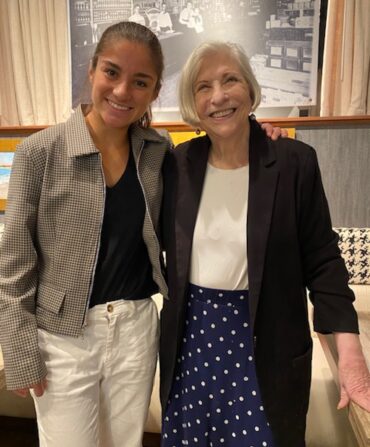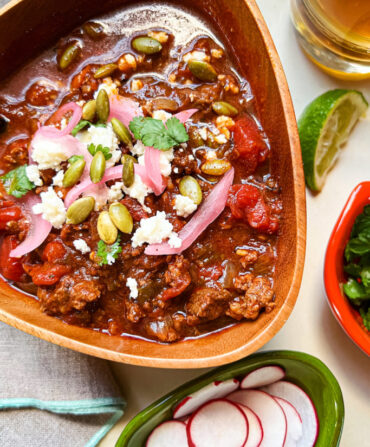Nancy Newsom Mahaffey of Col. Bill Newsom’s Aged Kentucky Country Hams is the only woman at the head of a major country ham operation. She’s also one of the last remaining cure masters who insists on the old ways in an era when climate control and industrial preservatives are perfectly acceptable alternatives. On January 1, she’ll usher her grandfather H.C. Newsom’s Princeton, Kentucky, country store into its 100th year, selling hickory-smoked country hams much like those her ancestors made in the 1600s. We caught up with her on the eve of the anniversary.
So the store opened on New Year’s Day?
I guess it did. My granddad, though, ran it as a general store. He cured hams, but just for his family. There was no market for country ham in those days, because everybody made their own.
How did you get into the country ham business?
Dad started curing hams for the store in an old ham house on the family farm. Nobody had used it since the 1800s. You can suspect that it was a very primitive building. Then in 1963, the government mandated that if you cured a certain amount of ham then you needed to become a federal facility. That’s when dad built his first concrete block building in town. I suspect he inoculated it with the 1800s molds from the old ham house. Eventually, the groceries weren’t selling but the hams were. It was the end of the mom-and-pop grocery era, and at the same time, the new generation had lost the rabbit’s foot on curing hams.

Photo: Courtesy of Col. Bill Newsom's Aged Kentucky Country Hams
Nancy Newsom Mahaffey.
You’re one of the few curemasters who still follows the seasons, without air conditioning or heat. Why take that risk?
I never changed the process because it doesn’t need fixing. I guess it’s because I’m preserving my heritage, too. My family started curing hams in the 1600s in Virginia, and then kept doing it in North Carolina before we came to Kentucky in 1823. Old-fashioned weather-curing makes for a more complex ham. And it’s a true product. In other words, when we say we have an “old-fashioned ham,” we do. You know, I had an awakening after I took over in 1987. I can still take myself to exactly the place where it happened. I realized that the old-fashioned process I followed was going to be an enigma in the marketplace one day. I thought to myself, I don’t know if that’ll enhance my business or if we’ll go on out of existence. With a product like ours, you don’t know. But now chefs and writers have enlightened the public. There are foodies that do know the difference, and I don’t have to tout the ham too hard. Don’t get me wrong, though. I’m not complacent. When you work this hard, you don’t get complacent.
Country ham is more popular now than it has been in decades. Was there a moment when that registered for you?
About ten years ago, we were going through hard economic times. I actually went back to college after twenty years, because I felt like, well, if we didn’t make it then at least I had experience running a business under my belt. That might be an asset. I never got my degree, though, because business picked up. I now cure about three times as many hams as I did. I built a second smokehouse in 2013, which was about five years after I should’ve. Now, there’s just not enough hours in the day to cure enough hams for everybody. When you don’t use sodium nitrate, you have to hand-rub these hams a long time. They’re labor-intensive, and it’s not over once you get them hung and smoked. This past spring, for example, was very cold. I had just hung the hams when I realized they could freeze. I had a few years under my belt, though, so I knew some old tricks to keep heat in the ham house without bringing in a heater. I’m never going to add heating or air conditioning, so if the weather changes enough this product may not exist anymore.
What do you think the future holds for old-fashioned country ham?
The future could be bright. It’s a delicate balance, though. We need to make sure we don’t change things—that we’re reiterating every year the traditional methods. The process can be lost a little bit at a time, and pretty soon something has changed drastically. I don’t know for sure whether my son will take over this business or not. This is a different business than when I took over. It’s a lot more complicated. He knows how to cure our hams, and I think he could do fine with that and all the government paperwork. He’s working with me now. But I want my children to do what they want with their lives. If someone else took over, it would have to be someone who loves the process, the heritage, the history—all those things that go into it. Somebody that’s down to earth and doesn’t want the millions, but more the old-fashioned flavor.
You’re using pastured pork now, right?
We’ve been doing pastured pork for over ten years. Most people don’t know that. We started about the same time Sam Edwards did, but not because he decided to do it. I just thought, What better product could there be than pastured pork with my cure on it? Our hams have always been natural: nitrate-free, weather-cured. Now our hogs are natural, too.
Any plans for anniversary celebrations?
I tell you what, I’ve thought about different things to do. All I know is that our customers made this, and I want to do some things for the people.







